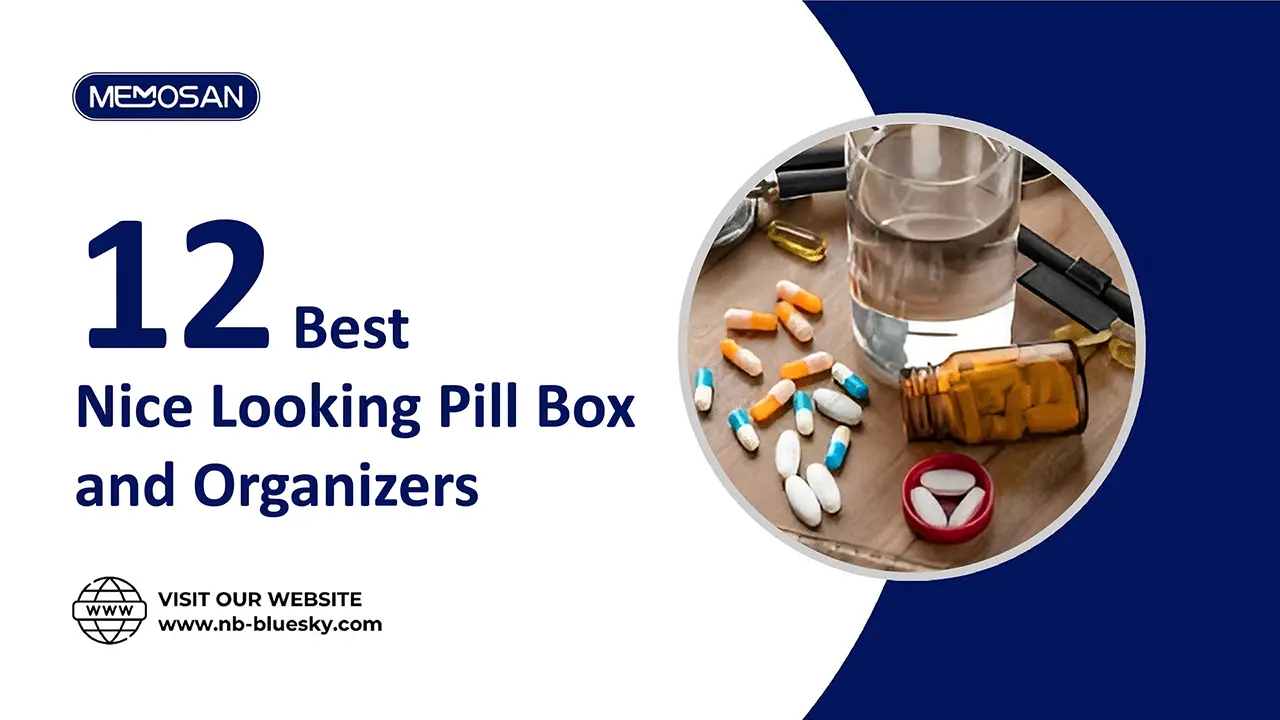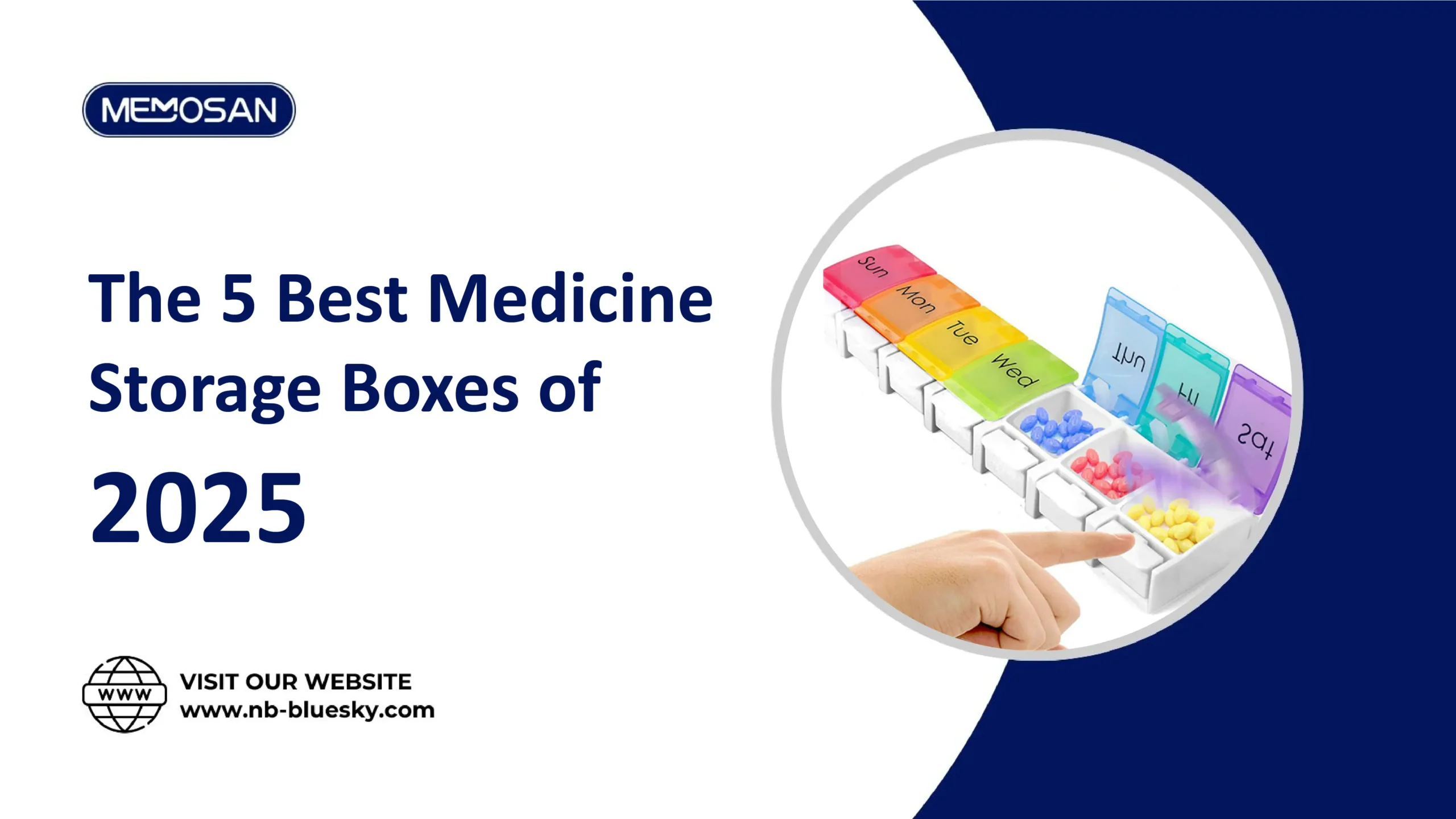Pill container plays a crucial role in preventing medication errors by organizing doses and simplifying regimens. Their evolution from basic designs to smart technologies, including reminders and tracking features, significantly enhances medication safety. Despite challenges like accessibility and cost, integrating pill containers with broader strategies, including patient education and healthcare provider involvement, is essential. Future innovations promise further advancements in medication management and patient safety.
Introduction
Ensuring the safe and efficient use of medications is important in healthcare. Medication errors are described as avoidable mistakes in the prescription, dispensing, and consumption of pharmaceutical products. These errors put patients in danger all around the world. Pill containers are essential to the many tactics used to address this problem. These containers actively arrange medicine dosages for specific periods, serving as more than just storage options; they are an essential resource in reducing the possibility of medication errors.

Understanding of Medication Errors
It is necessary to analyze drug errors to comprehend their nature, causes, and possible outcomes. Medication errors are more than just accidents; they are a serious public health issue that can significantly affect treatment outcomes and patient safety.
Forms of Medication Errors
- Incorrect Prescriptions: When a medical professional prescribes the wrong drug, dose, or form, this can happen. Erroneous prescriptions might result from misdiagnoses, inadequate pharmacological expertise, or inaccurate patient record interpretation.
- Dispensing Errors occur when the patient is given the incorrect drug or dosage during the pharmacy handling procedure. Human error during distribution, similar drug names or packaging, and misreading handwritten prescriptions are among the causes.
- Patient Non-adherence: when individuals discontinue taking their medications before their prescribed time, miss doses, or take the wrong amount of medication. Unclear instructions, budgetary limits, or adverse impacts might cause non-adherence.
Consequences of Medication Errors
- Minor Inconveniences: Certain mistakes could cause little to no harm, including discomfort or the need to switch medications.
- Severe Health Complications: More major mistakes may result in substantial side effects, worsening the ailment being treated, or new health problems.
- Fatalities: Medication errors can, in severe circumstances, result in patient death, emphasizing how vital mistake prevention is.
Contributing Factors
- Complex Medication Regimens: Complex drug schedules are frequently necessary for patients with various medical problems, which raises the possibility of prescription, dispensing, and adherence issues.
- Poor Communication Among Healthcare Providers: Errors and discrepancies in drug administration might result from poor communication or a lack of information exchange between physicians, pharmacists, and nurses.
- Patient Confusion: Similar medicine names and dosage guidelines can cause confusion and medication ingestion errors, particularly in patients who are managing numerous drugs.
- Healthcare System Issues: Error risk can also be increased by systemic problems like understaffing, poor training, and a shortage of integrated healthcare records.
Medication errors must be understood and addressed through a multimodal strategy involving patients, healthcare professionals, and systemic adjustments. The healthcare community can greatly lower the frequency and consequences of pharmaceutical errors by concentrating on the underlying causes and implementing focused initiatives. This will enhance patient safety and health outcomes.
Role of Pill Containers in Preventing Medication Errors
Pill containers play a crucial role in reducing medication errors, providing a workable and efficient solution to a challenging issue that impacts patients worldwide. These containers offer a comprehensive strategy for improving medicine safety and adherence, particularly when combined with technology. Here’s a thorough analysis of their function:

Simplifying Complex Regimens
- Pill containers organize medications by day and time, simplifying complex regimens.
- They help patients keep track of multiple medications, reducing confusion and the risk of taking the wrong dose at the wrong time.
Reducing the Risk of Missed Doses
- Clear compartmentalization lets patients see whether they’ve taken their medication, directly reducing the risk of missed or duplicate doses.
- This visual confirmation is especially important for elderly patients or those with cognitive impairments.
Enhancing Patient Independence
- By providing a means to manage medications independently, pill containers empower patients, especially those with chronic conditions requiring long-term medication management.
- This independence can improve overall adherence and contribute to better health outcomes.
Incorporating Reminder Systems
- Advanced pill containers come with built-in alarms or electronic reminders, ensuring that patients take their medication at the correct times.
- These reminders are invaluable for patients with busy schedules or memory issues.
Enabling Real-time Monitoring and Support
- Smart pill containers can track medication use and share data with healthcare providers, allowing for real-time monitoring and intervention if necessary.
- This feature is particularly beneficial for managing chronic diseases, where medication adherence is crucial for controlling the condition.
Preventing Dispensing Errors
- By organizing medications in advance, pill containers can help to identify dispensing errors before they lead to adverse effects.
- Patients or caregivers can compare the medication against the prescription when filling the container, catching any discrepancies early.
Improving Communication with Healthcare Providers
- The data collected by smart pill containers can facilitate better communication between patients and healthcare providers.
- This information can inform discussions about medication efficacy, side effects, and adherence, leading to more personalized care.
Promoting Medication Education and Awareness
- Organizing medications into a pill container can serve as an educational tool, making patients more aware of their medication names, dosages, and schedules.
- Increased familiarity with their medications can help patients avoid errors and communicate more effectively with healthcare providers.
Facilitating Caregiver Support
- Pill containers also support caregivers by providing a clear system for managing a patient’s medications, reducing the caregiver’s burden and anxiety about medication errors.
- They enable caregivers to quickly assess adherence and ensure that medications are taken as prescribed.
Encouraging Research and Development
- The ongoing development of pill containers, driven by the need to prevent medication errors, encourages innovation in healthcare products.
- This innovation not only benefits individual patients but also has the potential to reduce healthcare costs associated with medication errors and non-adherence.
Challenges and Restrictions
Pill containers have drawbacks despite their advantages. While smart containers confront challenges, including cost, user-friendliness, and technology accessibility, traditional models may still confound customers with complicated regimens. Furthermore, depending just on pill containers ignores the need for a thorough strategy for medication management, highlighting the significance of patient education and healthcare professional involvement.
Supplementary Strategies for Preventing Medication Errors
Educating Patients and Caregivers
Education is a cornerstone in the fight against medication errors. Providing patients and caregivers with comprehensive information about how to properly use medication, including understanding dosages, recognizing potential side effects, and knowing how to store medications safely, can significantly reduce errors. Educational sessions, whether in-person or via digital platforms, should cover the importance of adhering to prescribed regimens and the dangers of self-medication. Providing clear written instructions and utilizing teach-back methods where the patient repeats the instructions for clarity can also enhance understanding and adherence.
Clear Communication Among Healthcare Providers
Clear, concise communication among healthcare providers (HCPs) minimizes medication errors. This includes accurate prescription writing, ensuring legibility, and avoiding abbreviations that can be misinterpreted. Implementing standardized communication protocols and checklists can help in avoiding misunderstandings. Electronic health records (EHRs) significantly improve communication by providing a centralized platform for sharing patient information, reducing the risk of duplicate therapies or interactions. Regular multidisciplinary team meetings can also help align treatment plans and promptly address any potential issues.
Utilizing Technology for Medication Management
Technology offers innovative solutions to prevent medication errors. Electronic prescribing (e-prescribing) systems can reduce errors associated with handwritten prescriptions by ensuring clarity. Additionally, apps and digital platforms can facilitate medication management through reminders and alerts, helping patients take their medications on time and as prescribed. For more complex cases, digital health platforms can monitor patient adherence in real-time, allowing for adjustments to treatment plans as necessary. The use of barcode scanning in hospitals ensures that the right patient receives the right medication at the right dose and time.
Implementing Double-Check Systems
Double-check systems involve having more than one HCP verify critical medication-related tasks, such as dispensing and administering drugs. This approach can be particularly effective in high-risk situations, such as with high-alert medications. Although it may seem time-consuming, double-checking by another nurse or pharmacist can catch errors before they reach the patient. Incorporating automated double-checks within electronic dispensing systems can also add an extra layer of safety.
Encouraging Patient Involvement in Safety Practices
Patients should be encouraged to take an active role in their healthcare, including being vigilant about their medications. This includes asking questions if they notice changes in their medication appearance or regimen, keeping a personal health record of all medicines, and informing their healthcare team about all prescription, over-the-counter medications, and supplements they are taking. Patient-held medication lists can be a simple yet effective tool for enhancing communication between patients and healthcare providers and between providers themselves.
Regular Medication Reconciliation
Healthcare providers should perform medication reconciliation at every transition of care—in admission, transfer, and discharge. This process requires verifying the patient’s current medications and ensuring that medications are appropriately added, continued, stopped, or modified. This step is critical in preventing omissions, duplications, dosing errors, or drug interactions. Involving pharmacists adds expertise to the reconciliation process, helping identify potential drug interactions or duplications.

Future Directions
Advancements in pill container technology are unlocking vast potential, revolutionizing medication management by ensuring efficacy and minimizing errors. Innovators expect smart pill containers to evolve beyond simple reminders, integrating sensors that detect and record pill intake in real-time. This integration with digital health platforms can provide healthcare providers invaluable insights into patient adherence, enabling personalized care adjustments and interventions when necessary.
However, as we embark on this technological journey, we must navigate the ethical implications of care, particularly concerning patient privacy. The collection and analysis of medication adherence data raise questions about who can access this information and how they use it. Ensuring that these innovations benefit patients without compromising their privacy is paramount.
Final Thoughts
Against prescription errors, the common pill container becomes an indispensable ally in improving patient safety and treatment efficacy. As we’ve seen, these containers serve purposes beyond basic storage and are now essential parts of a thorough approach to prescription administration. Combining technology, organization, and user-friendly design addresses the complex issues of drug adherence and error prevention. Innovation and guidance on privacy, ethics, and accessibility will soon strengthen pill containers’ role in patient safety. Ultimately, the importance of pill containers in the healthcare system highlights a straightforward reality: occasionally, the most unlikely places can yield deep answers, transforming commonplace items into fortresses of patient safety and care.
FAQs: Pill Container
What is the pill container called?
People often refer to a pill container by several names, including “pill box,” “pill case,” or “pill container.” They use these terms interchangeably to describe a container for storing and organizing medication.
What are pill containers made of?
Pill containers are typically made from a variety of materials, depending on their design and intended use. The most common materials include plastic, metal, and sometimes glass. Manufacturers widely use plastic for its durability, lightweight nature, and the ease with which they can produce it in various shapes and sizes. They often use metal, particularly aluminium, for more durable or decorative pill boxes. Additionally, some pill containers might incorporate smart technology components, such as electronic circuits and displays, for reminders and tracking purposes.
What is a container in a pharmacy?
In a pharmacy, a container refers to any type of packaging used to hold medication. Pharmacy containers vary from liquid medication bottles to pill vials, blister packs, and inhalers. Their design ensures medication protection from contamination, degradation, and damage, maintaining effectiveness until patient use.






